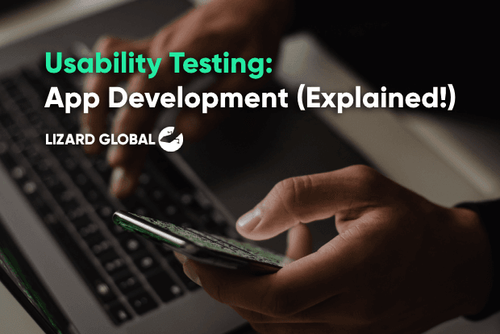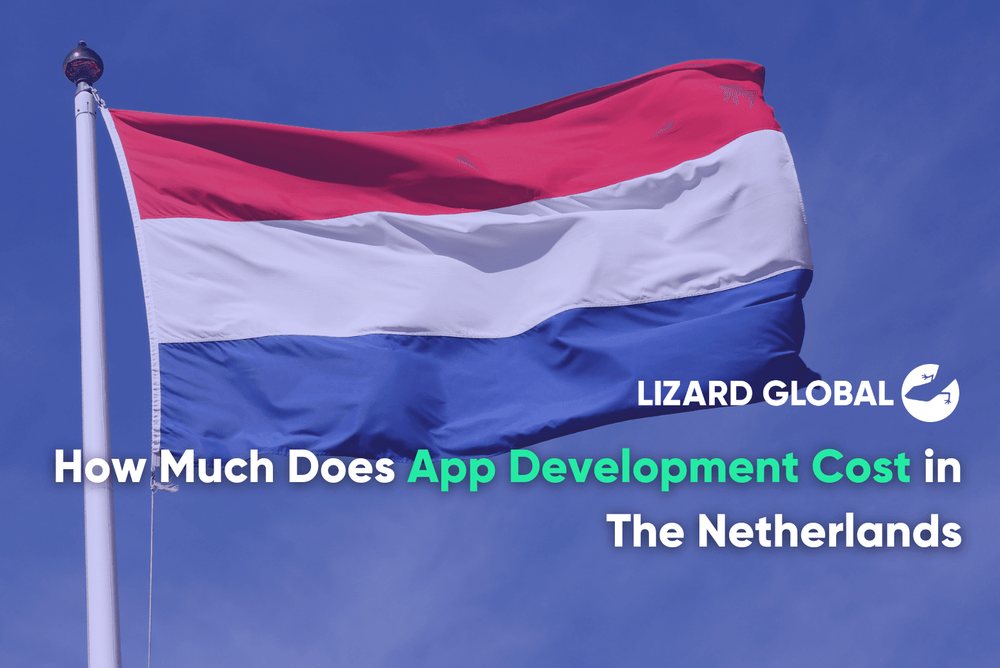Tips for Creating a Successful On-Demand Delivery App
Get the latest updates about our blog posts.
Subscribe so you don’t miss out!
Key Takeaways
- Business Models Matter: Choose the right business model (single store, aggregator, or hybrid) as it determines your app’s structure and user experience.
- Essential Features: Ensure your on-demand delivery app includes must-have features like real-time tracking, multiple payment options, and easy registration.
- Choose the Right Tech Stack: For a reliable app, use frameworks like React Native for the frontend, Node.js for the backend, and cloud platforms like AWS for scalability.
- Development Phases: Follow a structured process, from ideation and wireframing to development, testing, and post-launch maintenance.
- Partner with Experts: Lizard Global provides the expertise to create user-friendly, scalable on-demand delivery apps tailored to your business needs.
The rise of on-demand delivery apps has reshaped how consumers access goods and services all over the world, from food and groceries to parcels and transportation. Companies like Uber, DoorDash, and Instacart have set a benchmark, demonstrating that convenience and speed are paramount in today's fast-paced world. Developing an on-demand delivery app can be a game-changer, but to succeed in a competitive marketplace, businesses need to understand the essential steps and considerations involved in creating an efficient and user-friendly platform.
In this blog, we’ll explore the core aspects of developing an on-demand delivery app, from identifying the right features to launching and maintaining the platform. We'll also highlight why working with a seasoned development partner like Lizard Global is crucial for success.
1. Define the Business Model
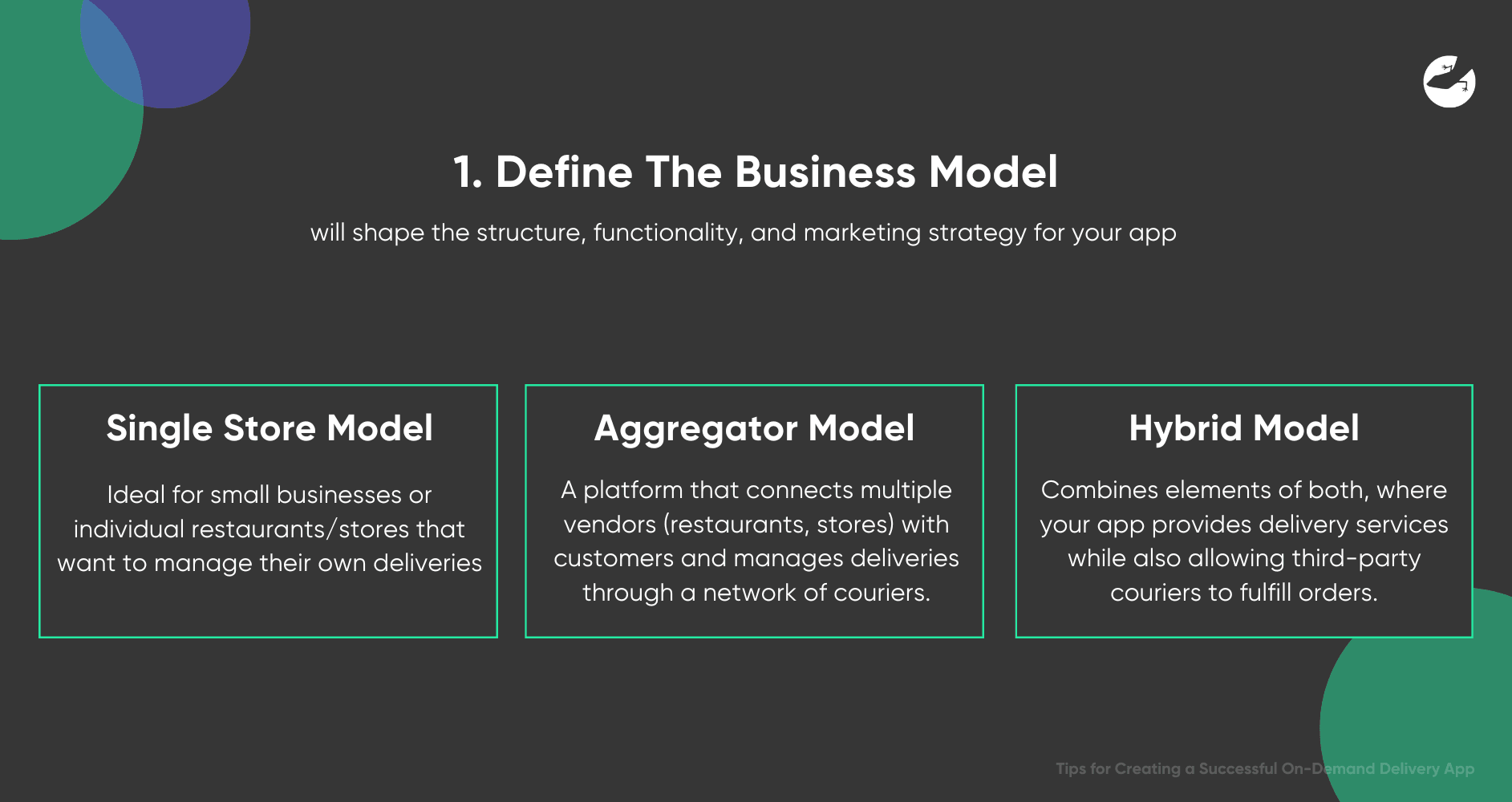
Before diving into the technical aspects of building an on-demand delivery app, it's essential to define your business model. There are several models to choose from depending on the type of service you're offering:
- Single Store Model: Ideal for small businesses or individual restaurants/stores that want to manage their own deliveries.
- Aggregator Model: A platform that connects multiple vendors (restaurants, stores) with customers and manages deliveries through a network of couriers.
- Hybrid Model: Combines elements of both, where your app provides delivery services while also allowing third-party couriers to fulfill orders.
Defining your model early will shape the structure, functionality, and marketing strategy for your app.
2. Key Features of a Successful On-Demand Delivery App
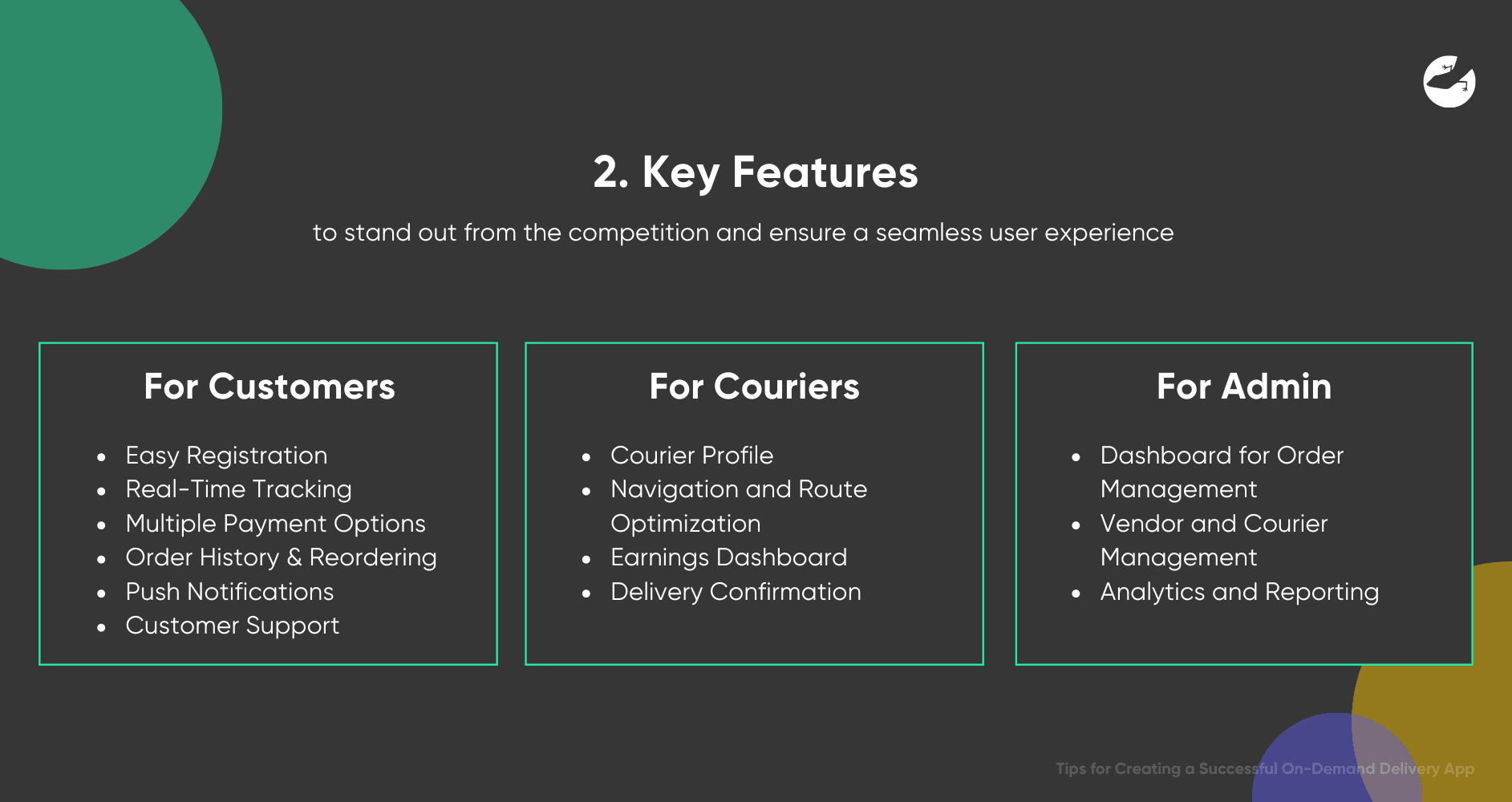
To stand out from the competition and ensure a seamless user experience, you need to include essential features in your app. Here are the must-have features for each stakeholder in the on-demand delivery ecosystem:
For Customers
- Easy Registration: Simplify sign-ups using social media accounts, email, or phone numbers.
- Real-Time Tracking: Allow customers to track their deliveries in real-time, ensuring transparency and peace of mind.
- Multiple Payment Options: Provide flexible and secure payment methods, including credit cards, mobile wallets, and cash on delivery.
- Order History & Reordering: Enable customers to easily view past orders and reorder with just a few clicks.
- Push Notifications: Keep users informed about order status, discounts, and promotions.
- Customer Support: Offer in-app support via chat or phone for seamless problem resolution.
For Couriers
- Courier Profile: Couriers should be able to manage their profiles, set availability, and update their documents.
- Navigation and Route Optimization: Integrate GPS and route optimization to help couriers deliver faster.
- Earnings Dashboard: Provide an easy way for couriers to track their earnings, tips, and job history.
- Delivery Confirmation: Allow couriers to mark deliveries as complete, including adding photos or signatures.
For Admin
- Dashboard for Order Management: Admins should have access to an intuitive dashboard to track orders, deliveries, and customer satisfaction.
- Vendor and Courier Management: Easily add, manage, and track performance of vendors and couriers.
- Analytics and Reporting: Access detailed reports and analytics to track growth, identify problems, and optimize service.
3. The Technology Stack
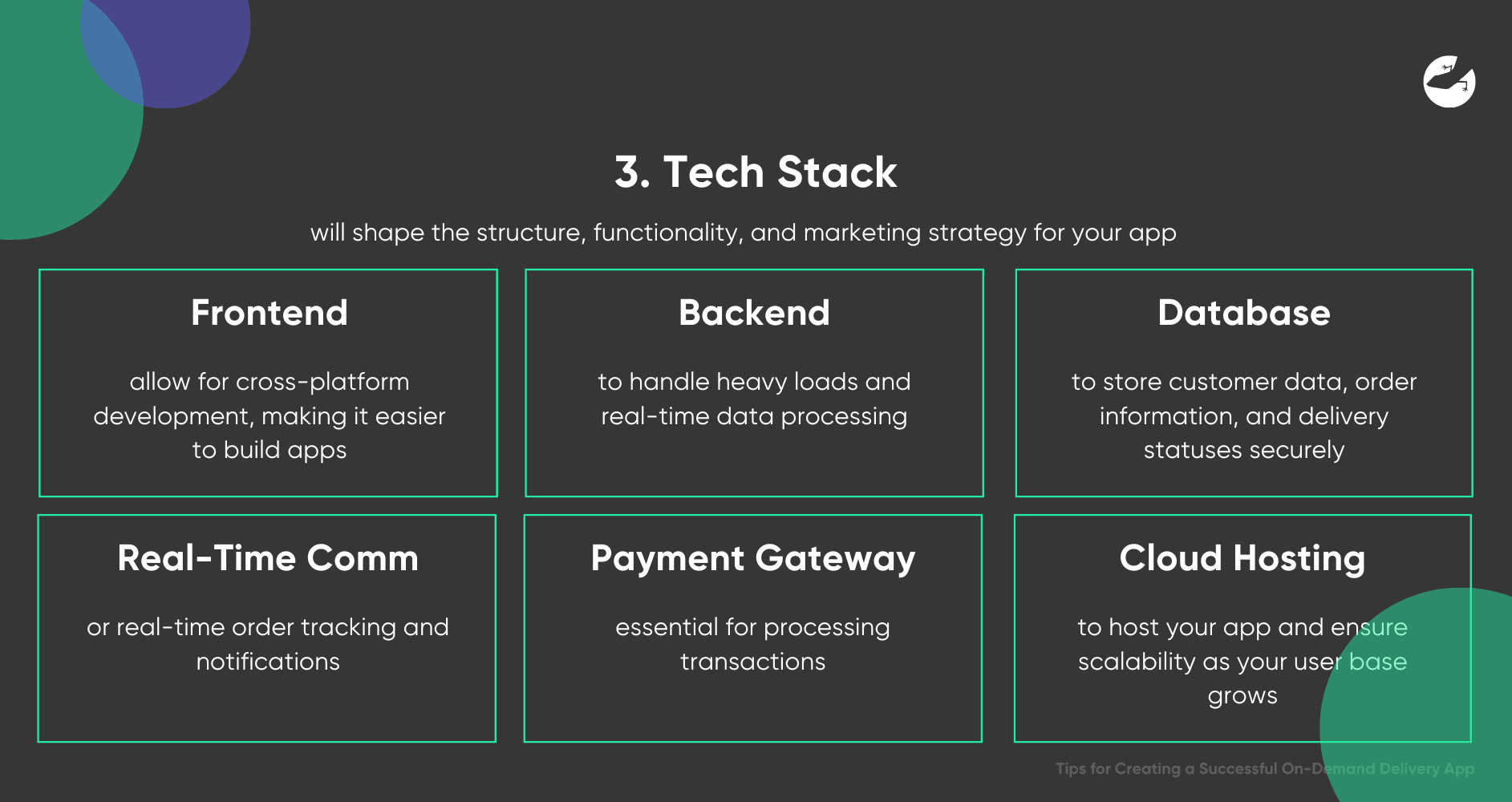
Choosing the right tech stack is crucial for building a scalable and reliable app. Here’s a common tech stack for an on-demand delivery platform:
- Frontend Development: For customer-facing mobile apps, frameworks like React Native or Flutter allow for cross-platform development, making it easier to build apps for both Android and iOS simultaneously.
- Backend Development: Use robust backend frameworks like Node.js or Django (Python) to handle heavy loads and real-time data processing.
- Database: Choose a database like PostgreSQL or MongoDB to store customer data, order information, and delivery statuses securely.
- Real-Time Communication: Integrate WebSockets or Firebase for real-time order tracking and notifications.
- Payment Gateway Integration: Secure and popular payment gateways like Stripe, PayPal, or Square are essential for processing transactions.
- Cloud Hosting: Use cloud platforms like AWS, Google Cloud, or Microsoft Azure to host your app and ensure scalability as your user base grows.
4. Development Process: Step-by-Step
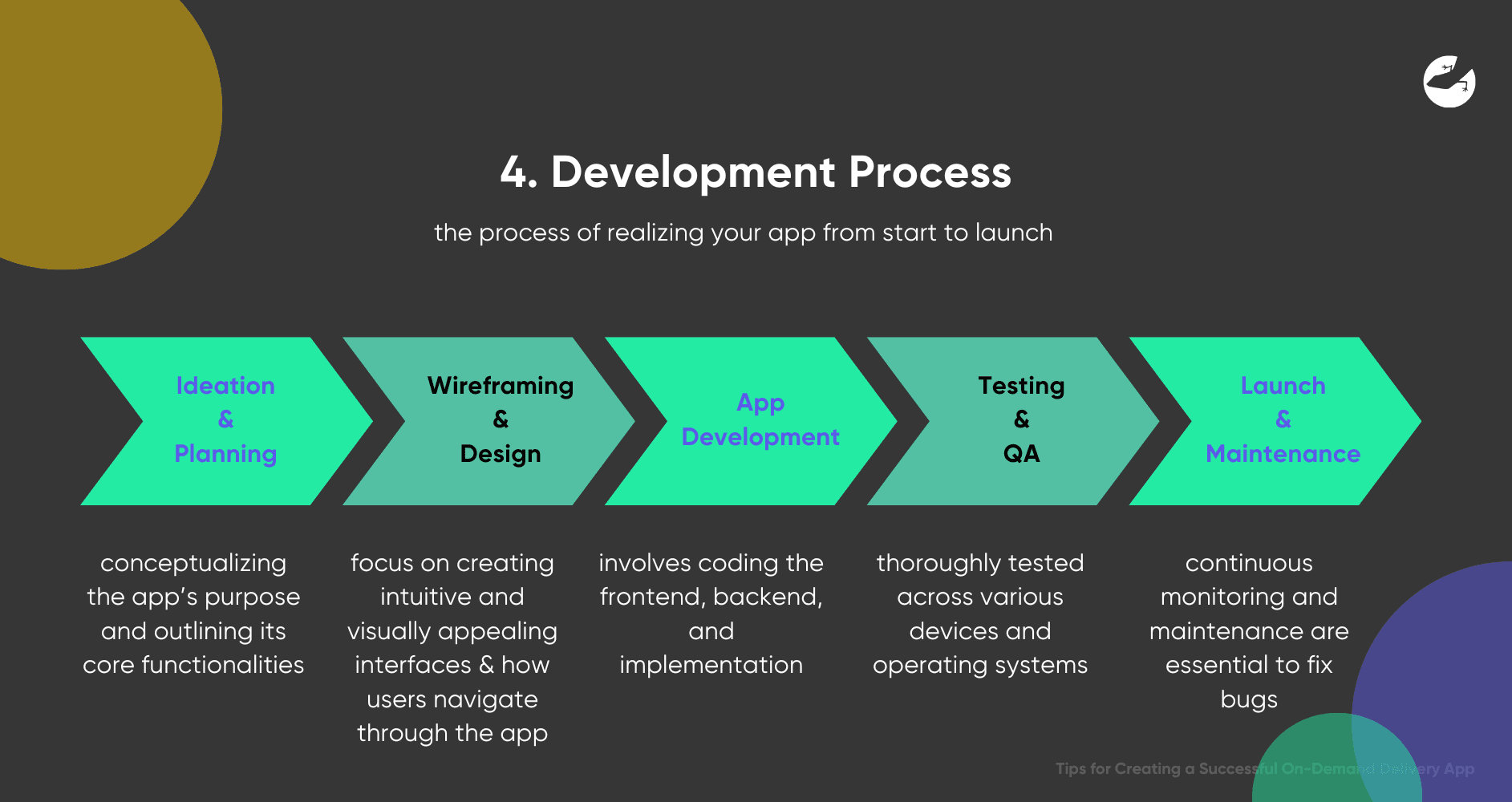
Building an on-demand delivery app requires a structured development process. From ideation and prototyping to coding, testing, and deployment, following each step carefully ensures your app functions smoothly and meets user expectations.
i. Ideation and Planning
The development process starts with conceptualizing the app’s purpose and outlining its core functionalities. This stage involves market research to understand the competition, your target audience, and the unique value proposition your app will offer.
ii. Wireframing and Design
Design plays a crucial role in the success of an app. Your team should focus on creating intuitive and visually appealing interfaces. The wireframes should define how users navigate through the app, while the UI/UX design ensures the app is easy to use.
iii. App Development
Once the design is finalized, the actual development begins. This phase involves coding the frontend, backend, and implementing all the necessary APIs for payments, real-time tracking, and communication.
iv. Testing and Quality Assurance
Before launching the app, it must be thoroughly tested across various devices and operating systems. Testing includes functional testing, performance testing, and usability testing to ensure the app works seamlessly.
v. Launch and Maintenance
After testing and polishing the app, it’s time to launch. Post-launch, continuous monitoring and maintenance are essential to fix bugs, roll out updates, and add new features based on user feedback.
Want to find out how much it costs to build your dream app or web app?
5. Challenges and Considerations
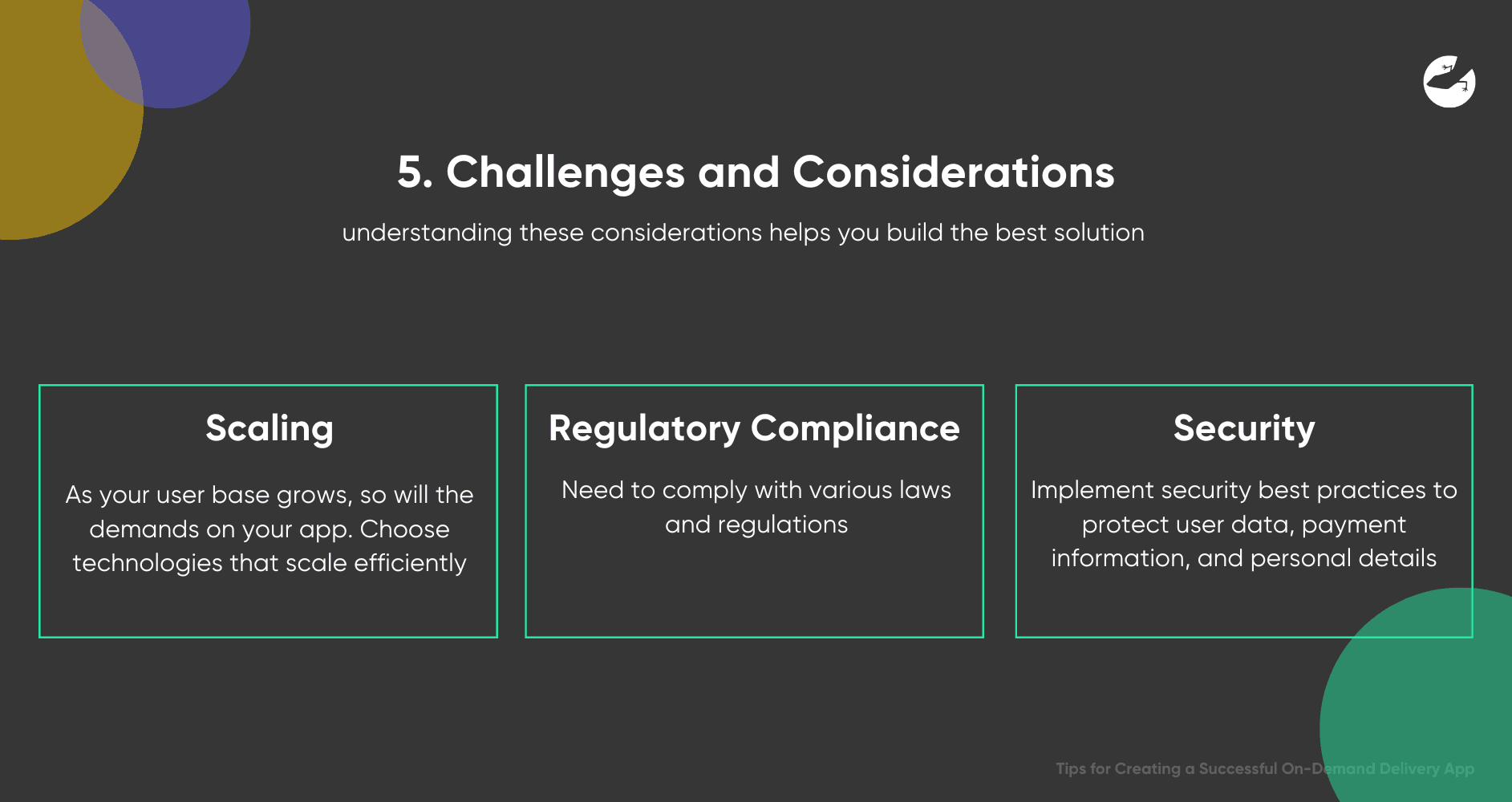
Developing an on-demand delivery app comes with its own set of challenges, including managing high demand, ensuring security, and scaling operations. Understanding these considerations helps you build the best solution.
i. Scaling
As your user base grows, so will the demands on your app. It’s important to choose technologies that scale efficiently to avoid performance issues.
ii. Regulatory Compliance
Depending on your region and service, you may need to comply with various laws and regulations, including data protection (GDPR or PDPA), payment regulations, and courier safety standards.
iii. Security
Securing user data, payment information, and personal details of couriers is critical. Implement security best practices, including encryption, multi-factor authentication (MFA), and compliance with data protection regulations.
6. Monetization Strategies
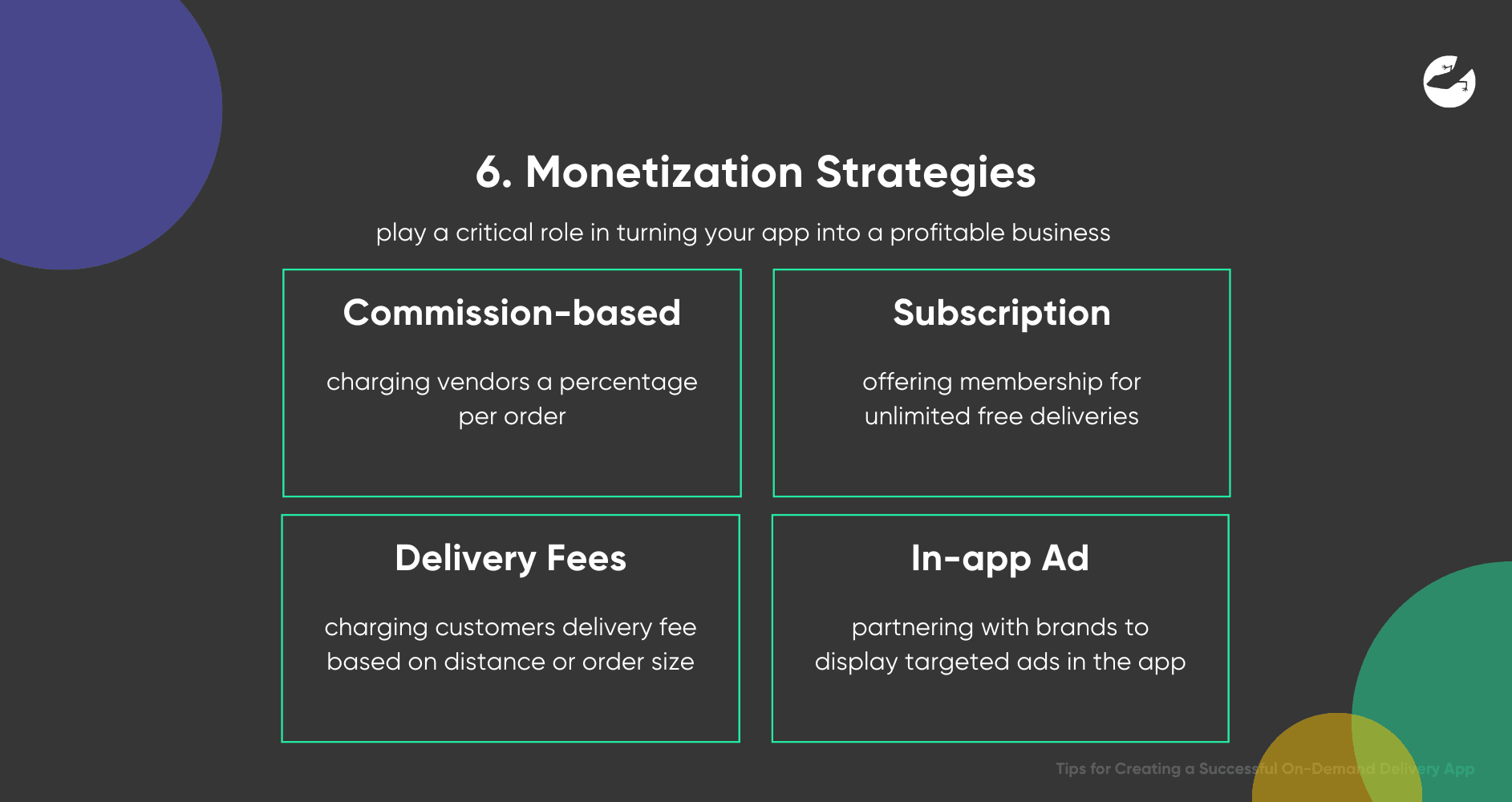
Monetization strategies play a critical role in turning your app into a profitable business. Whether through delivery fees, in-app advertisements, or premium subscriptions, you need to implement a revenue model that aligns with your target audience and market trends.
An on-demand delivery app offers various monetization avenues, including:
- Commission-based model: Charging vendors a percentage per order.
- Subscription model: Offering customers a membership for unlimited free deliveries.
- Delivery fees: Charging customers a delivery fee based on distance or order size.
- In-app advertising: Partnering with brands to display targeted ads in the app.
Why Choose Lizard Global to Develop Your On-Demand Delivery App?
Developing an on-demand delivery app is a complex process that requires careful planning, execution, and technical expertise. That’s where Lizard Global comes in. As a full-stack app development company, we specialize in creating scalable and innovative solutions that meet the unique needs of our clients.

Our team has extensive experience in building robust, user-friendly on-demand delivery apps tailored to meet the specific requirements of different industries. We take a customer-first approach, ensuring that your app not only delivers on functionality but also offers a seamless user experience.
From choosing the right tech stack to implementing cutting-edge features like real-time tracking and payment integrations, we guide you every step of the way. With a proven track record of success and a passion for innovation, Lizard Global is the ideal partner to turn your on-demand delivery app idea into reality.


